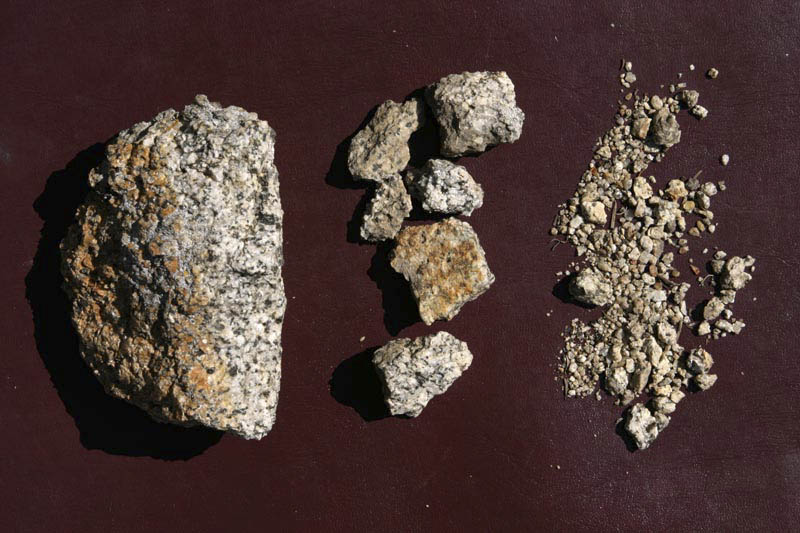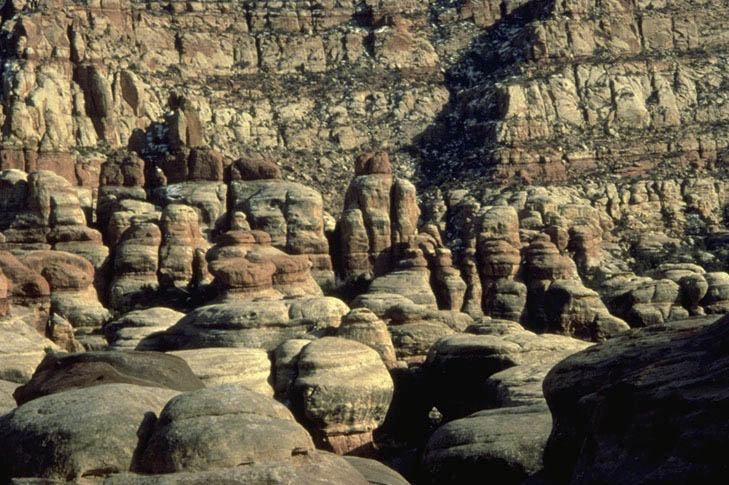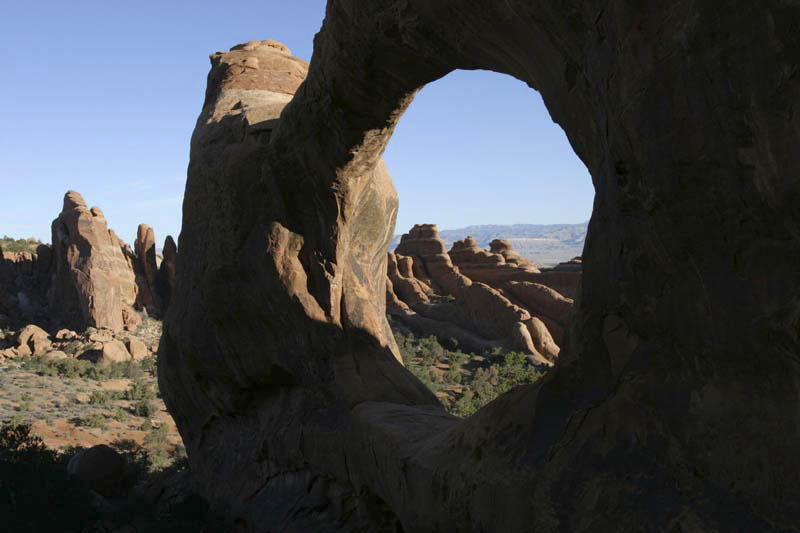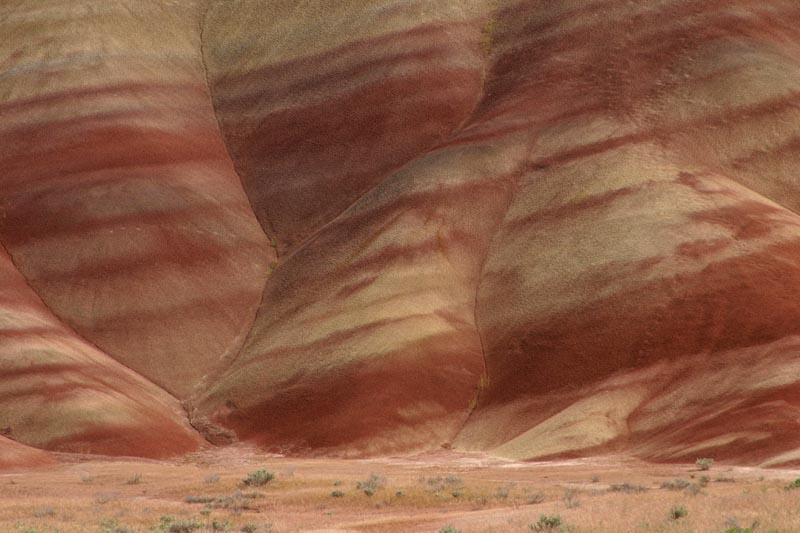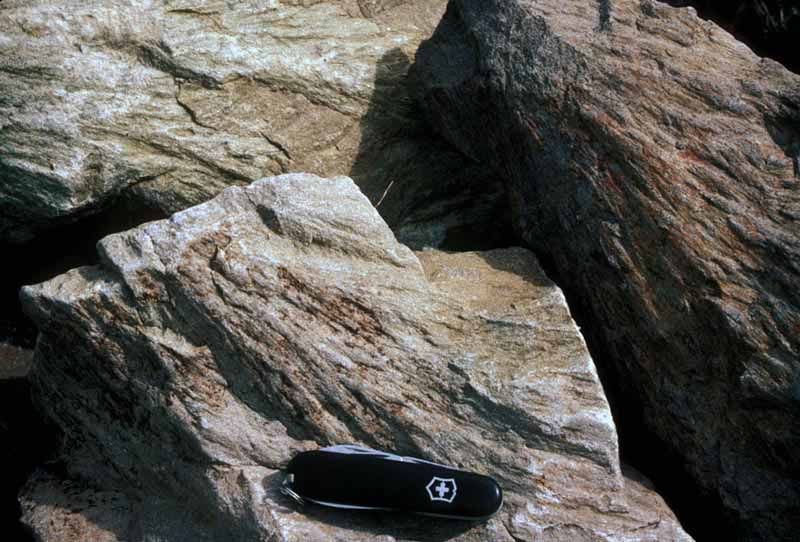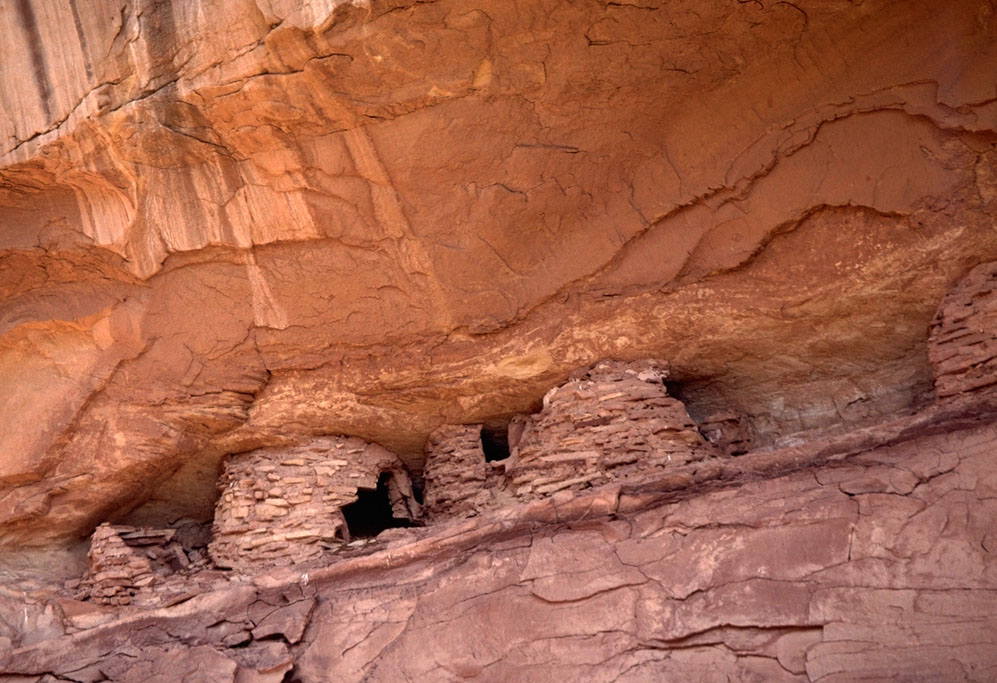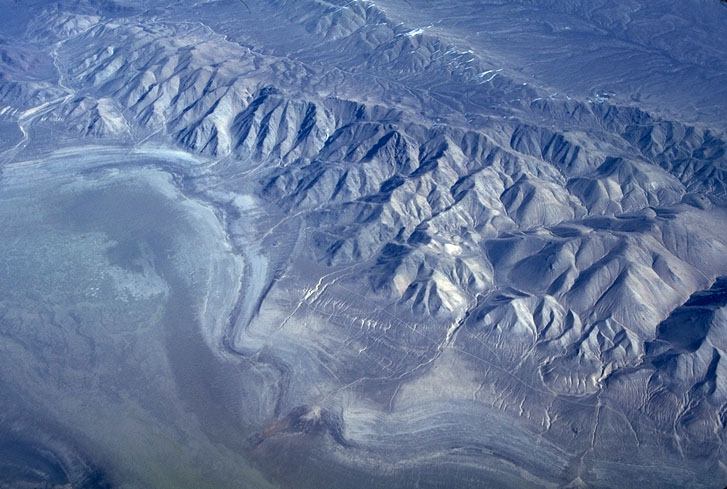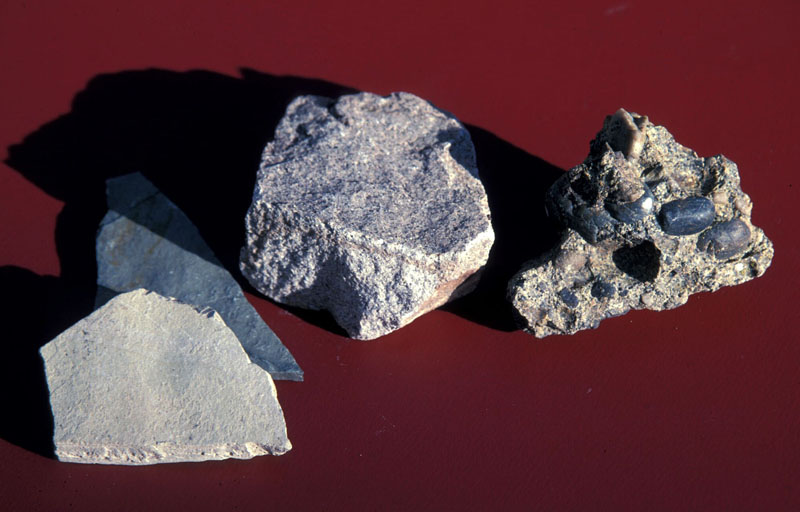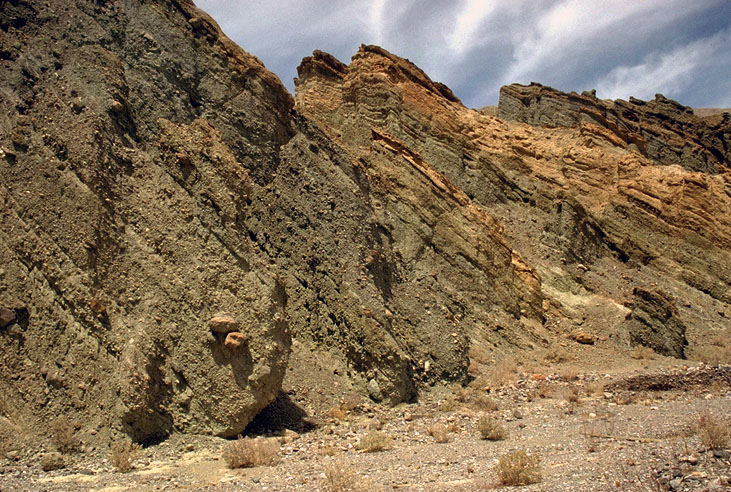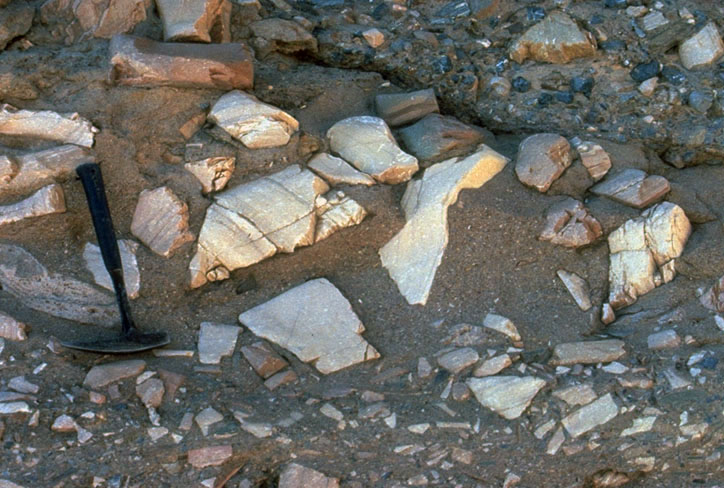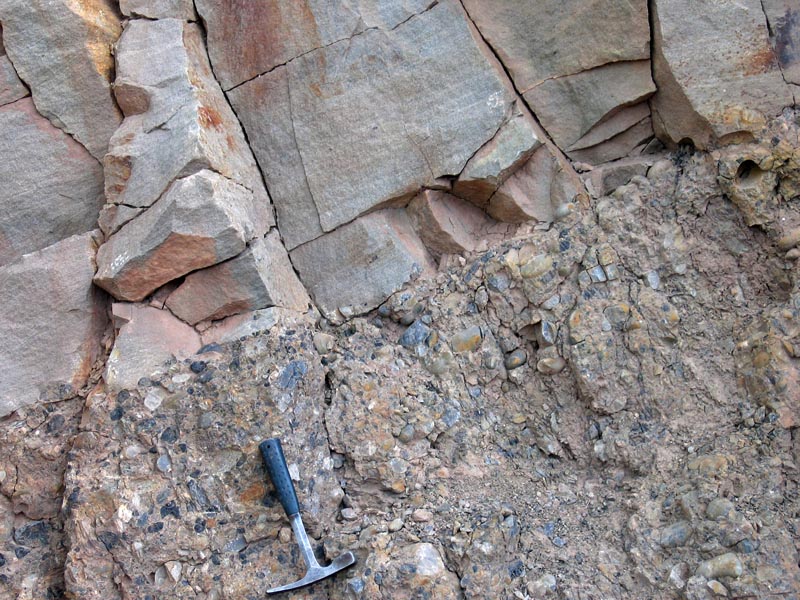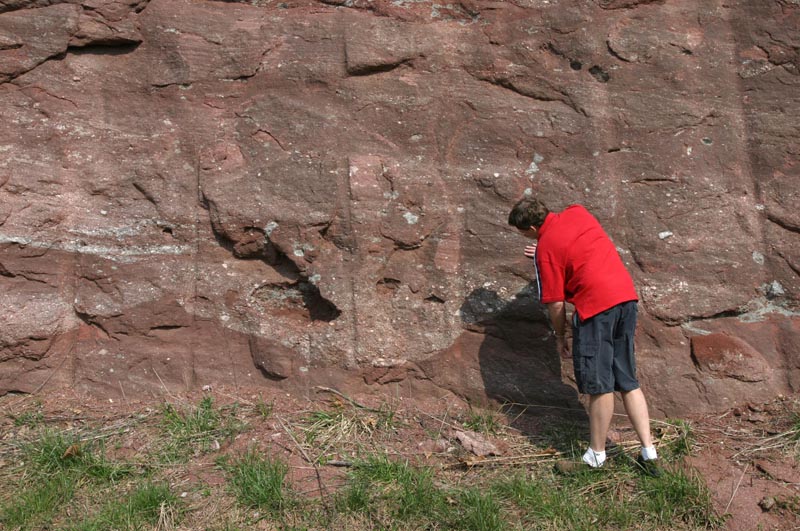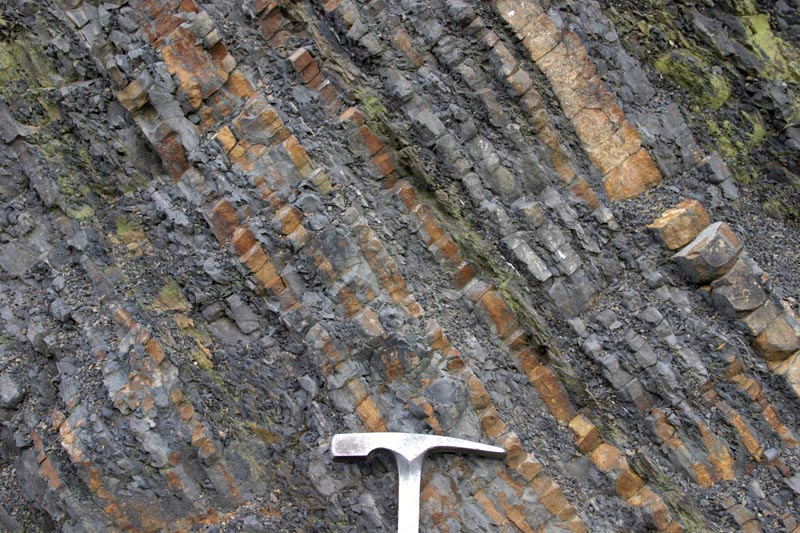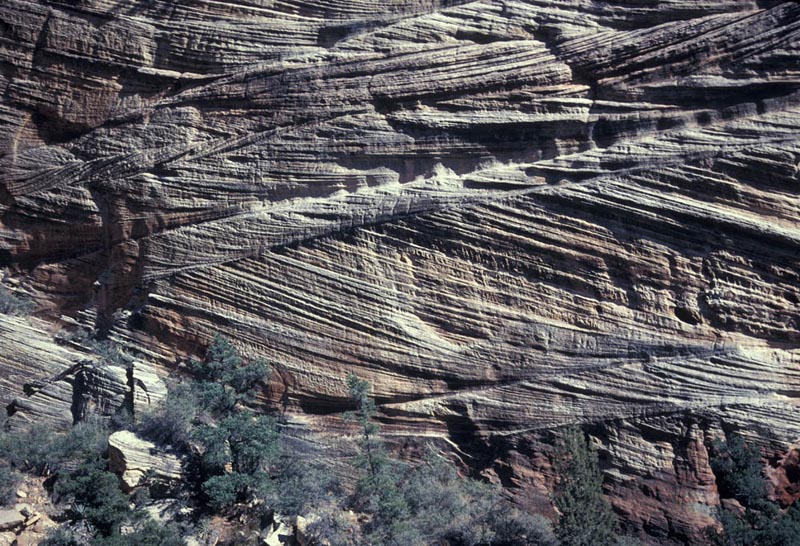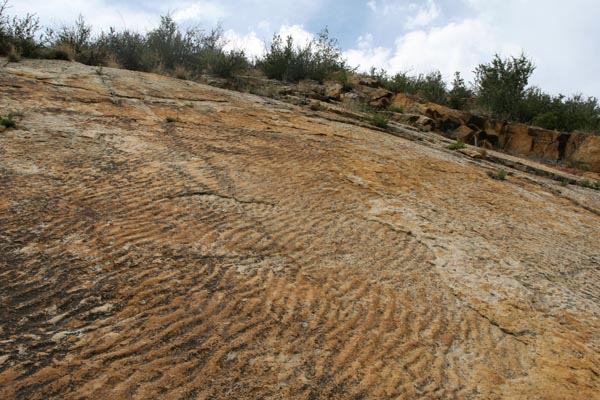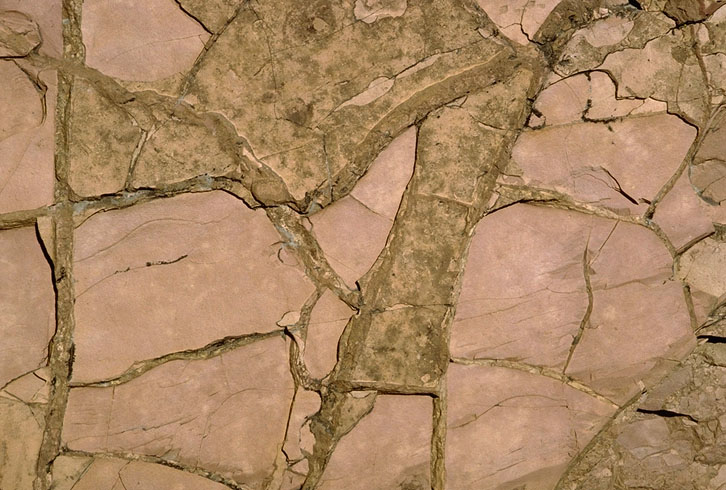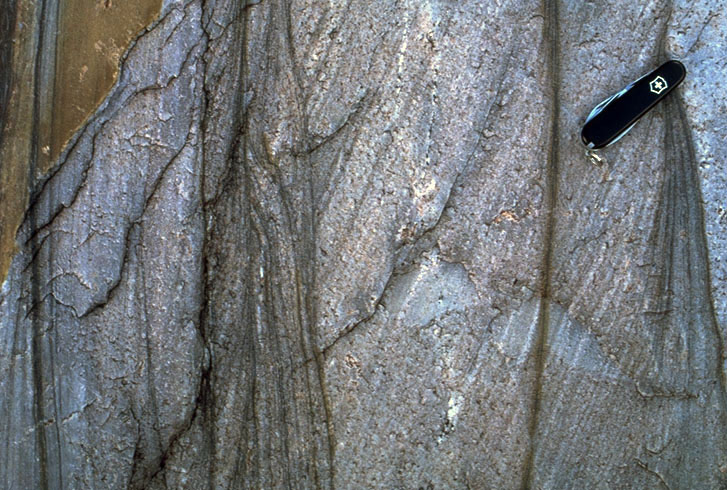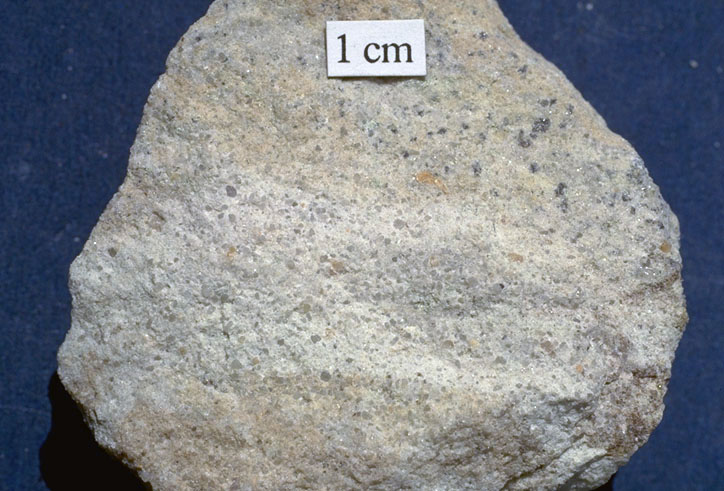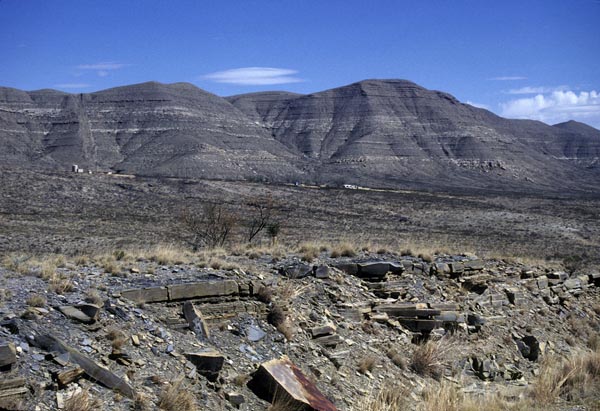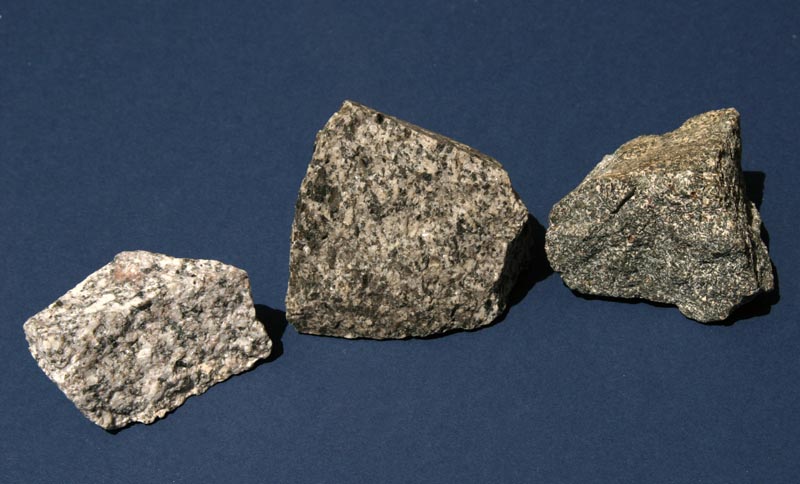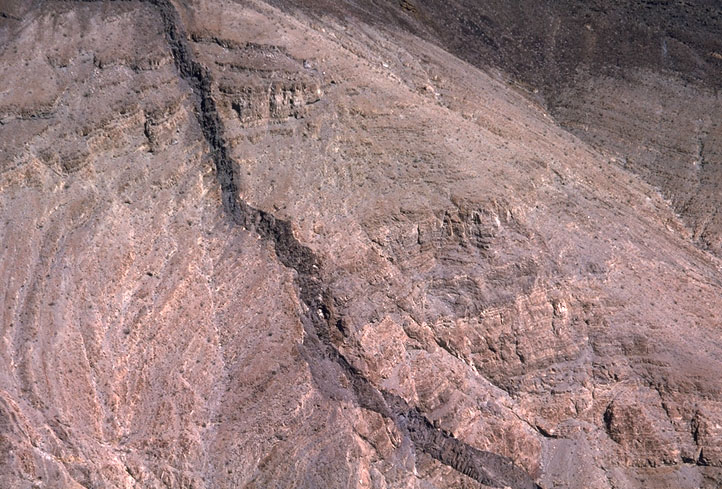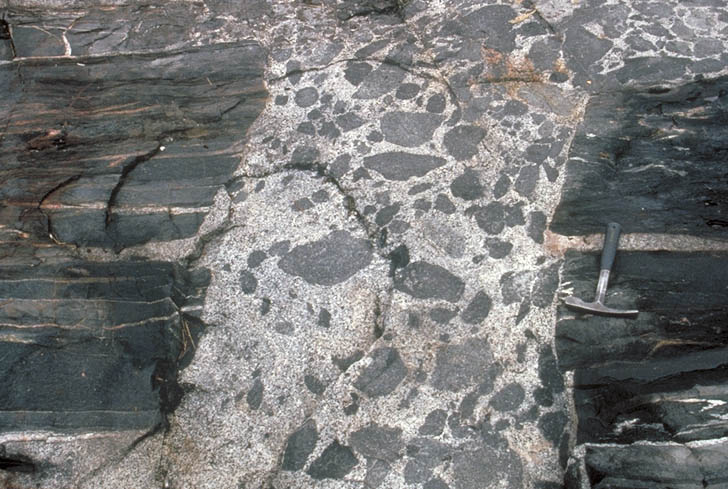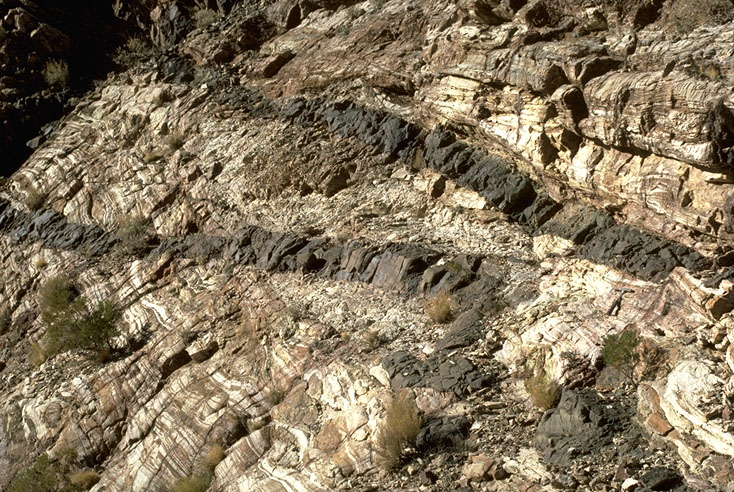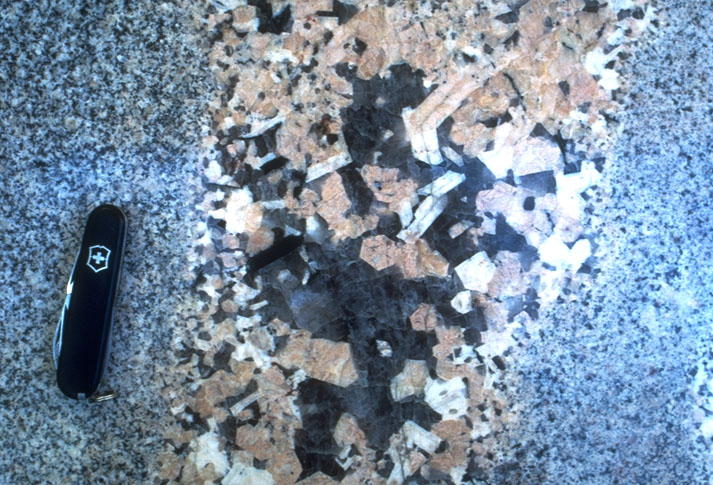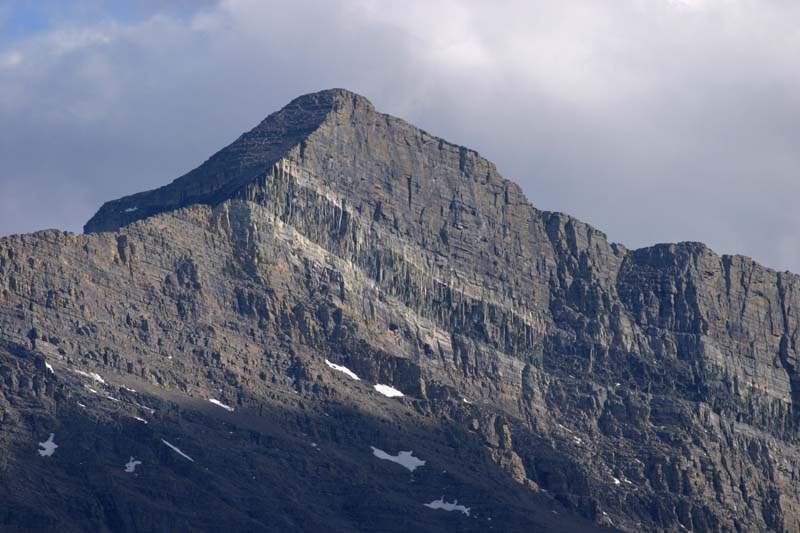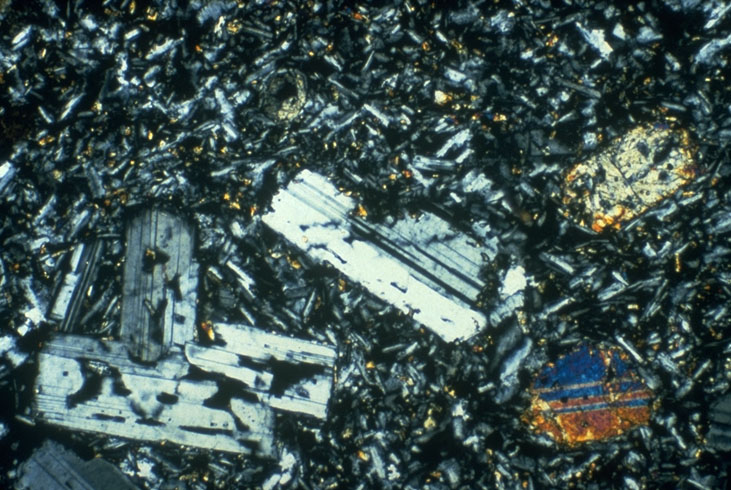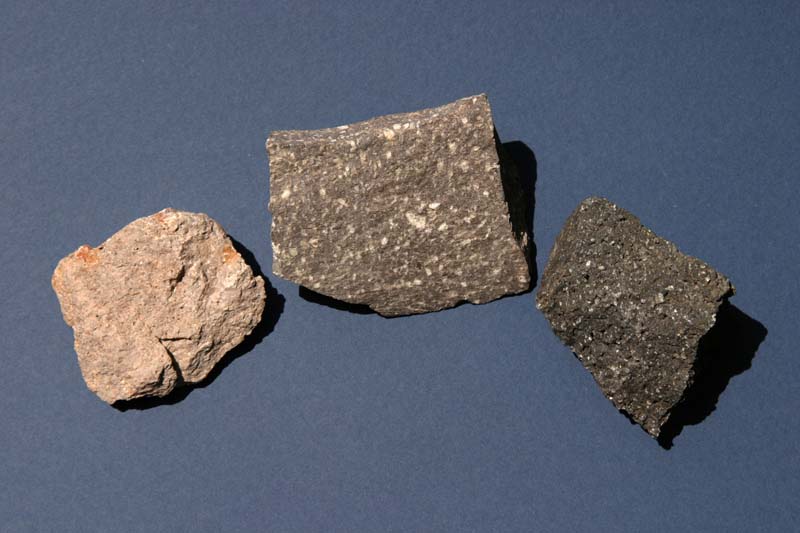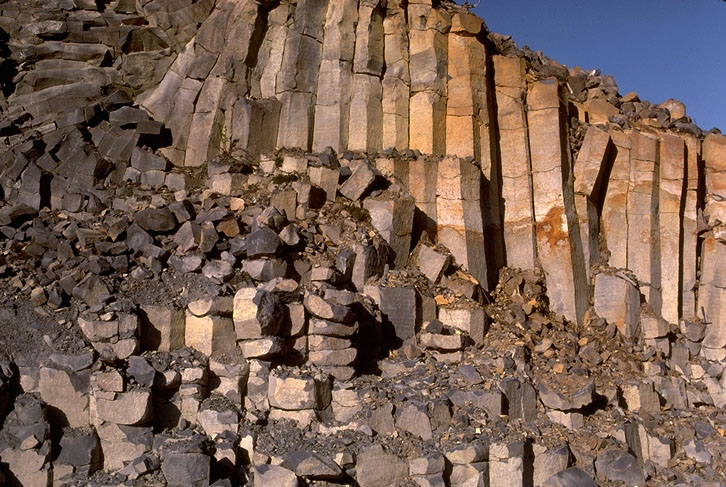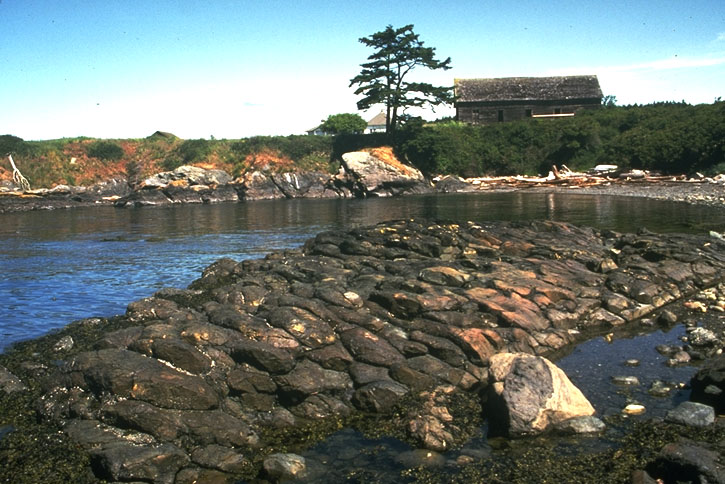 | Field Geology |
Successive stages of grus formation from granitic rock. Grus forms by a combination of mechanical and chemical weathering processes |
Mechanical Weathering and fracture-controlled erosion Effects of weathering and erosion along joint surfaces, SE Utah |
Development of arch along joint surface,Arches NP, Utah. Note fins in background |
Paleosols, John Day Fm., Oregon |
Shattercones --fr. meteorite impact |
Anasazi Grainary, SE Utah |
Ancient Shorelines, Nevada |
Clastic sedimentary rocks: shale, sandstone, conglomerate. Scale of photograph is approximately 30 cm across. |
Tilted Conglomerate, Death Valley, California. These rocks are part of the Miocene Furnace Creek Formation and were deposited on alluvial fans |
Mudflow deposit, Death Valley, California. Note that there are two deposits here, the one with the largest particles being on top |
Depositional contact, conglomerate over sandstone, SW Montana |
Channel Deposit in Triassic redbeds, Connecticut |
Alternating beds of sandstone and shale--Turbidites. Pacifica, California |
Eolian cross-beds in Jurassic Navajo Sandstone, Zion National Park, Utah |
Ripple marks in Cretaceous Dakota Formation, Colorado |
Mudcracks in Proterozoic dolomite, Snowslip Fm., Glacier National Park, Montana |
Graded bedding: pebble conglomerate up into sandstone |
Small-scale cross-bedding in sandstone. The top of the bed is to the left |
Quartz sandstone |
Shale. Permian Castile Fm., W. Texas |
From left to right, these rocks are arranged in order of decreasing silica content: granite, diorite, and gabbro |
Mafic dike intruding deformed Paleozoic sedimentary rock, SE California Note the gentle fold in the sedimentary rock; it is cut by this near vertical dike. Consequently, we can infer that intrusion occurred after deposition of the rock and after deformation |
Felsic dike with mafic inclusions intruding low-grade metamorphic rock This dike is chock full of mafic inclusions, probably derived from interaction with an earlier, more mafic magma. Note the small sill-like apophyses intruding from the dike into the country rock |
Mafic sill and dike intruding foliated marble, Death Valley, California These two mafic intrusions nicely demonstrate the difference between dikes and sills. The lower intrusion is the dike, as it cuts across layering (which in this case is foliation in marble); the upper intrusion is the sill, as it runs parallel to the layering |
Pegmatite dike with chilled margin intruding granodiorite.This pegmatite dike shows a distinct decrease in grain size as it approaches its contact with the country rock, likely brought on by more rapid cooling along the edge of the dike |
Sill intruding Dolomite of the Helena Formation, Glacier National Park, Montana. The dark band in this cliff face is the Purcell Sill, and diorite sill that intrudes rock of the Proterozoic Belt Supergroup in Glacier National Park. The white rock on either side of the sill is bleached because of the contact metamorphism |
Photomicrograph of basalt.This photomicrograph (about 3mm across) shows the crystalline nature of the fine-grained "groundmass" of a basalt. The phenocrysts, visible to the naked eye, are plagioclase; much of the groundmass also consists of plagioclase |
Volcanic rock types. From left to right, these rocks are rhyolite, andesite, and basalt--arranged in order progressively decreasing amounts of silica |
Columnar jointing in basalt. The vertical columns in this basalt flow form by cooling of the flow, which causes the flow to shrink, which in turn causes vertical fractures (joints) to form |
Pillow Basalt, Lopez Island, WashingtonPillow basalt, named because individual blocks resemble pillows, form underwater. Along the west coast of North America, there are many exposures of pillow basalt, because they formed in a marine environment and were subsequently accreted to the continent |
